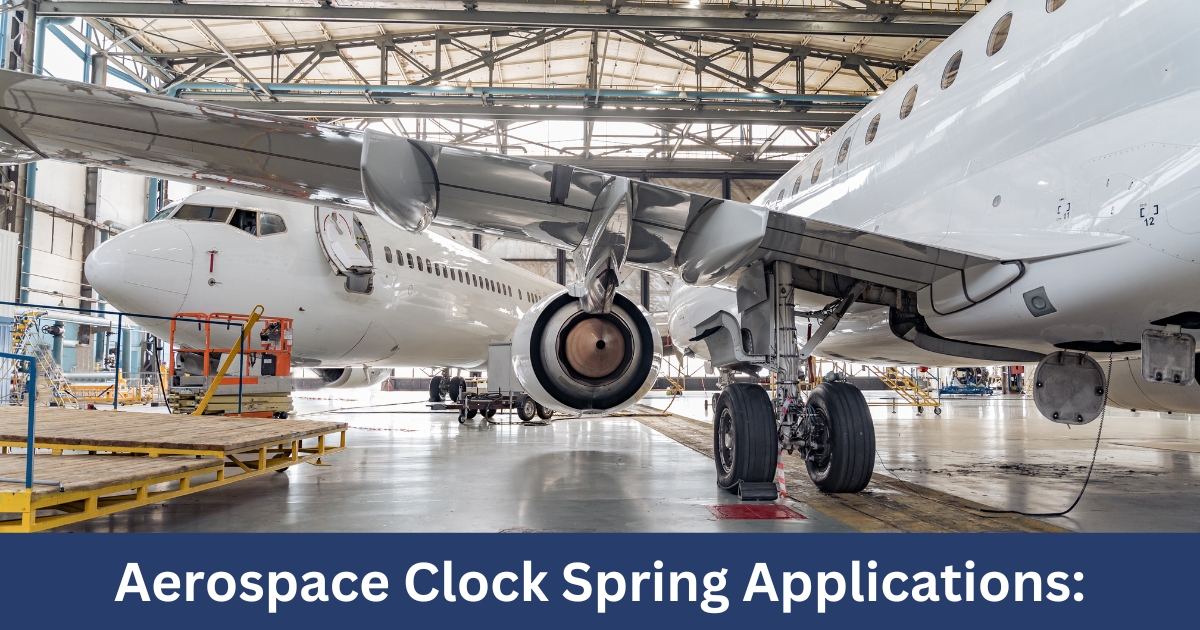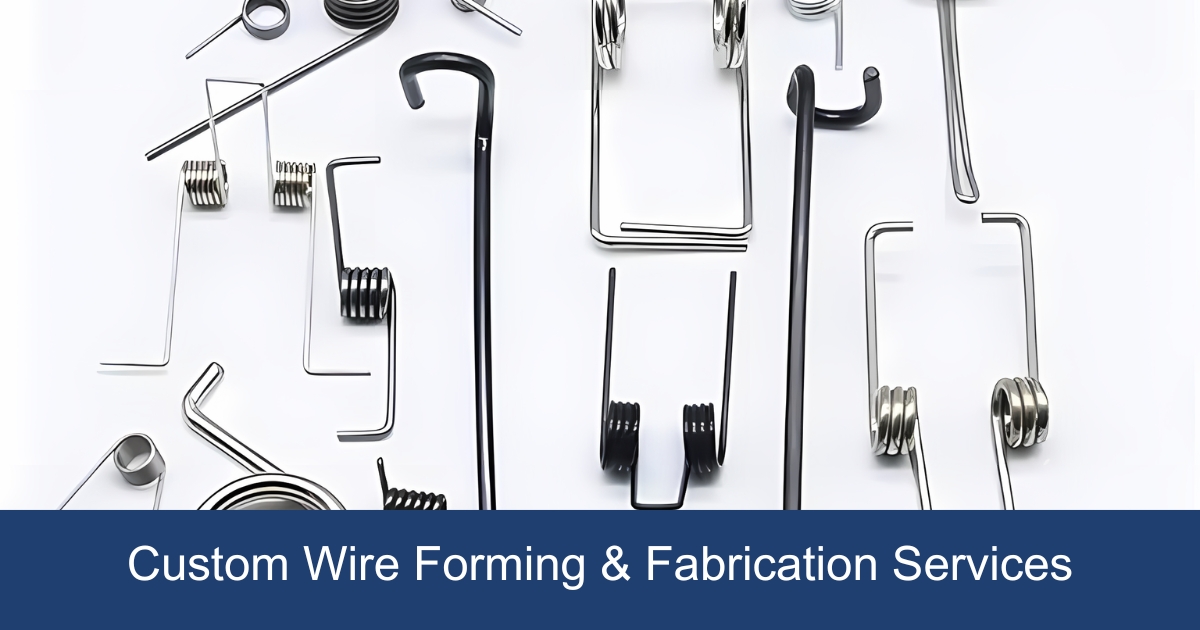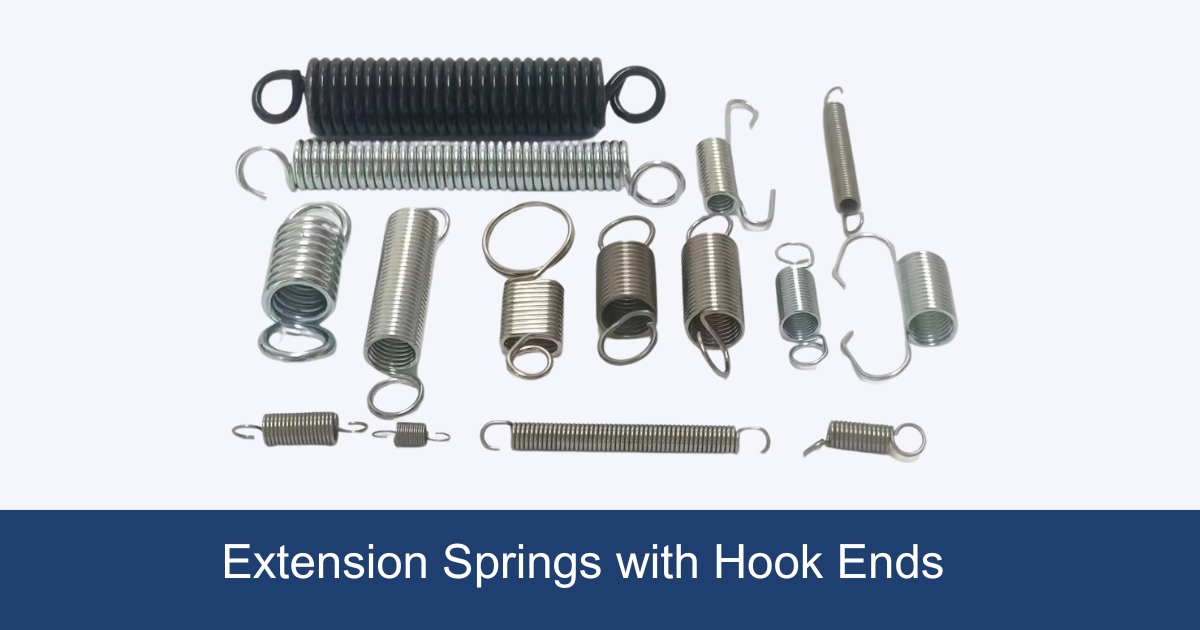Compression and extension springs serve different purposes across various applications. Compression springs store energy when compressed, while extension springs store energy when stretched. Both types are vital in mechanisms from automotive systems to household appliances. Understanding these differences helps in selecting the right spring for specific needs.
Compression springs absorb shock or maintain force, whereas extension springs provide tension and pull. This guide outlines spring types, end variations, characteristics, and uses to support informed decision-making.
Key Takeaways
- Compression springs are designed to resist compressive forces, while extension springs are made to handle tensile forces. Choose the right type based on your specific application needs.
- Understand the key differences between compression and extension springs, such as their shapes and how they function, to make informed decisions for your projects.
- When selecting springs for machinery, consider load requirements and space constraints to ensure optimal performance and longevity.
- Custom spring designs can provide tailored solutions that enhance efficiency and meet unique operational demands in various industries.
- Quality matters: Invest in high-quality springs to avoid failures and maintain safety in industrial applications, as highlighted in successful case studies.
- Regularly assess factors affecting spring performance, such as material fatigue and environmental conditions, to maximize the lifespan and reliability of your equipment.
Understanding Compression Springs
Definition
Compression springs are mechanical devices designed to resist compressive forces. When a load is applied, they compress and return to their original shape once the load is removed, storing energy in the process. Unlike tension springs and end springs, their primary function is to store energy and provide resistance in various mechanical systems.
Structure
Compression springs typically have a helical coiled structure, allowing them to compress easily while providing significant resistance. The coils can be made from various materials, like steel or stainless steel, depending on the spring end type. High-carbon steel is often used for wire compression springs to ensure strength and durability. Alternative materials, such as oil-tempered wire, enhance performance under specific conditions.
Energy Storage
Compression springs store mechanical energy when they are compressed. As the tension springs compress, it absorbs energy from the applied force. This stored energy in tension springs is released when the force is removed, allowing the spring to return to its original shape. The amount of energy stored depends on the spring’s material, coil diameter, and overall design.
Common Designs
Typical compression spring designs include cylindrical and conical shapes. Cylindrical springs are most common due to their versatility. Conical springs offer advantages in applications where space is limited. Both designs can be customized based on specific needs.
End Types
Compression spring end types play a crucial role in their functionality. The ends can be flat, closed, or open, affecting how the spring interacts with other components. Custom compression spring end types allow for advanced search, better fit, and performance in unique applications.
Applications
Compression springs find use in various industries. They are essential in automotive systems, electronics, and machinery. For example, coil spring material helps absorb shocks in vehicle suspensions or provides tension in electronic switches, as a type of spring.
Understanding Extension Springs
Functionality
Extension springs are essential for applications requiring tension. They store energy when stretched and release it when relaxed, making them ideal for scenarios needing a pulling force, such as in vehicle suspension systems and machinery. The design may include features like a 180-degree spring or a double torsion spring leg to meet specific needs.
These springs resist the applied stretch by elongating and storing energy as tension increases. When the force is removed, they return to their original shape, ensuring stability and support in mechanical systems. This behavior is crucial under constant load, helping control movement in circular loops, reflecting essential spring design principles.
Design Features
Extension springs are designed with features that enhance functionality. They typically have hooks or loops at each end for easy attachment to other components. The wire used is often thicker to increase durability. Some designs include ground end springs for added strength and stability.
Hooks on tension springs can be open or closed, depending on application requirements. Closed hooks of the loop end type provide a secure connection, ideal for applications needing stability. Open hooks offer flexibility during assembly. The choice of hook type affects how the spring interacts with its surroundings.
Materials and Sizes
Extension springs are available in various materials to fit different environments. Common options include stainless steel, music wire, oil-tempered wire, and stock extension spring. Each material offers specific properties, like corrosion resistance or enhanced durability. Sizes range from small coils for household devices to larger, industrial springs, with strength determined by diameter and length.
Manufacturers provide detailed specifications, such as maximum load capacity, elastic limits, and spring rate. Understanding these details is crucial for selecting the appropriate spring for specific applications.
Applications
Many industries use extension springs for their versatility. They are common in automotive parts, fitness equipment, medical devices, consumer products, and toys. Their ability to absorb shock and maintain tension is valuable in diverse designs. In automotive suspension systems, they help maintain vehicle stability. In fitness and medical devices, they provide resistance, enhancing user experience.
Summary
Understanding extension springs is essential for selecting the right components in mechanical systems. Their design features like hooks or loops, common spring designs, and custom extension spring end facilitate effective function in components in farm machines. Various materials and sizes ensure that they meet diverse application needs, including tension spring.
Key Differences Between Spring Types
Energy Storage
Extension and compression springs store energy in different ways. Extension springs work by elongating within the elastic limit when a force is applied. This stretching stores potential energy within the spring.
In contrast, compression springs store energy through shortening. When a load is placed on them, they compress. This compression also creates potential energy, but the mechanism differs fundamentally from extension springs.
Structural Design
The structural design of extension and compression springs varies significantly. Extension springs feature hooks or loops at their ends, with thicker wire and a specific helix angle for attachment to other components. The coil design is tighter and more uniform to handle pulling forces efficiently.
Compression springs are designed with open ends and can be cylindrical or conical. The coils are spaced apart to accommodate compressive forces, allowing the springs to store energy efficiently. This design helps maintain performance under load without buckling, as demonstrated by helical and conical compression springs.
End Types
Different spring end types play a crucial role in functionality. For extension springs, the common end types include hooks, loops, and custom designs tailored for specific applications. Each type, including common hook types and spring end types, ensures secure attachment while allowing for smooth operation.
For compression springs, typical torsion spring end types include flat ends or ground ends. These designs ensure stability and proper alignment during compression cycles with the tension spring helix angle. Custom extension spring end types may also be utilized for unique requirements in various industries.
Applications
Both spring types serve distinct purposes based on their design and operation. Extension springs are used in applications requiring a pulling force, like trampolines and garage doors. Their ability to stretch makes them ideal for such uses, effectively functioning as elastic devices for various tension-based solutions.
Compression springs are commonly used where pushing force is needed. They find applications in automotive suspensions and mattresses. Their expertise in compression allows them to absorb shock effectively with a tension spring compression form factor strategy.
Performance Considerations
When selecting between extension and compression springs, consider performance factors. Load capacity, cycle life, and environmental conditions impact effectiveness.
Extension springs may fatigue faster due to constant stretching, while compression springs can withstand higher loads without significant deformation. Understanding these differences helps in choosing the right spring type for specific tasks, including springs vs compression springs and other Types of Springs.
Choosing the Right Spring for Machinery
Application Requirements
Selecting the right mechanical spring, such as torsion springs, begins with understanding specific application requirements. Each spring type serves a unique purpose. Compression springs are suited for applications requiring resistance to compressive forces. Tension springs are ideal for situations where pulling or stretching is necessary.
Torsion springs apply torque and are essential in mechanisms like hinges. Double torsion springs can store more mechanical energy in a compact space, making them ideal for devices needing significant force in limited areas. This design is suitable for heavy-duty applications, such as those using 180-degree springs. Evaluating these needs helps narrow down choices.
Load Conditions
Load conditions play a critical role in spring selection. Understanding whether the application involves tension or compression, along with the basics of spring design, is essential for applications of extension spring and choosing the correct spring based on material type. Compression springs bear loads when they are compressed, while tension springs handle loads when they are stretched.
The load’s magnitude also affects the spring choice. A heavier load may require thicker coils or a different spring material to withstand the stress. For example, stock torsion springs may suffice for lighter applications but could fail under excessive weight or a heavy load. Thus, evaluating load conditions ensures the selected spring can handle operational demands.
Environmental Factors
Environmental factors significantly influence spring performance and longevity. Temperature variations can affect material properties. Some materials become brittle in cold conditions, while others may soften in heat, like Century Spring.
Corrosion is another concern. Springs used outdoors or in humid environments need protection against rust and wear. Stainless steel or specially coated materials, along with tension spring, can enhance durability in such settings. Assessing environmental factors and external load ensures that the chosen spring will perform reliably over time.
Custom Solutions
Zigoal Customization can meet the specific needs of your project. Depending on the application, a company may need to produce a custom torsion spring to their specifications. Custom solutions allow for adjustment of size, number of coils and material selection, including custom compression spring end type configurations, wire combinations and wound coils to meet precise requirements.
Working with manufacturers specializing in custom springs provides access to various designs and materials. They can create solutions that optimize performance while adhering to industry standards, design requirements, application requirements, and tension spring.
Summary
Choosing between compression and extension springs requires careful consideration of several factors. Application requirements dictate which type is suitable. Load conditions and loop configurations, including tension spring considerations, help determine strength and design needed for effective operation.
Environmental factors guide material selection for durability and performance longevity under external load, design function, and tension spring. Custom solutions offer flexibility when standard options fall short. By thoroughly assessing these aspects, one can ensure selecting the right spring type for machinery applications.
Benefits of Custom Spring Designs
Tailored Solutions
Custom springs offer significant advantages. They are designed to meet specific application requirements. This tailoring ensures that each spring performs optimally. For example, a custom compression spring can be made with the exact dimensions and units of measurement needed for complex machinery. This leads to better fit and functionality.
Standard springs may not always meet the demands of unique machinery. Custom designs address this issue directly. Engineers can specify wire diameter, coil count, material type, and spring specification. This results in springs that operate efficiently under specific loads and conditions.
Enhanced Performance
Performance is crucial in machinery operations. Custom springs improve both performance and efficiency. They provide the right amount of force needed for various tasks, reflecting differences in function and the correct spring to ensure its vital function with the appropriate hooks spring rate. This precision reduces wear and tear on components.
For instance, custom extension springs can be designed to stretch just enough without overstressing. This careful design prolongs the lifespan of both the mechanical components, the spring, and the mechanical device it supports in a double loop configuration. Enhanced performance also translates into smoother operations. Machines run more effectively when all parts, including the tension spring, work harmoniously together.
Cost Savings
Cost savings are an important factor in manufacturing decisions. Investing in custom springs can lead to long-term savings. Although they may have a higher upfront cost at the average rate, their durability pays off over time.
Custom springs often last longer than standard options. The precise engineering and spring design mean they are less likely to fail or break, as they are exact replicas. Fewer replacements mean lower maintenance costs for businesses. Better performance can lead to reduced energy consumption.
Businesses also benefit from improved productivity when using custom solutions. Efficient machinery operates faster and with fewer interruptions. This can significantly impact overall production rates.
Longevity of Custom Springs
Longevity is another key advantage of custom springs. These springs are made from high-quality materials tailored for specific environments. For example, springs made of stainless steel used in corrosive settings can be produced from rust-resistant alloys.
This attention to detail enhances the lifespan of the spring itself. When agricultural equipment and medical equipment run smoothly, it reduces downtime for repairs or replacements of mechanical energy and art manufacturing equipment. Businesses can focus on their core operations rather than worrying about equipment failures.
Moreover, custom designs allow for future adjustments if needed. Manufacturers can update specifications for applications in machinery or mobile devices as technology evolves or needs change. This adaptability keeps machinery relevant and efficient over time.
Successful Industrial Applications
Compression Springs
Compression springs find extensive use in various industries. These springs are designed to resist compressive forces. They work well in automotive applications, where they help absorb shocks. For example, car suspensions often utilize compression springs. They provide stability and comfort during rides.
Manufacturers also use compression springs in consumer products like washing machines. The springs help balance the drum during operation. This prevents excessive vibration. Compression springs are vital in medical devices. They assist in mechanisms like syringes and inhalers. Their reliability ensures consistent performance in critical situations.
Extension Springs
Extension springs serve different purposes across industries. They are designed to operate under tension. One common application is in garage doors. Extension springs with a double side loop allow smooth opening and closing of the door, maintaining an appropriate outer diameter. They also provide safety by controlling the door’s movement.
Another industry that benefits from extension springs is aerospace. These springs are used in aircraft landing gear systems. They ensure proper functioning during takeoff and landing. The reliability of extension springs plays a crucial role in maintaining safety standards.
Impact on Machinery Functionality
The choice between compression and extension springs greatly impacts machinery performance. Each spring type has unique characteristics that fit specific applications. Using the correct spring enhances efficiency and reliability. For example, compression springs improve durability in devices needing shock absorption, while extension springs manage controlled tension release. Incorrect selection can cause component collisions, failures, or malfunctions.
Industries must also consider the material, as options like stainless steel, carbon steel, titanium alloys, or copper alloys offer distinct benefits. Stainless steel resists corrosion, while carbon steel provides cost-effective strength.
Understanding these applications is crucial for industrial success, enhancing functionality and reliability in sectors like industrial machinery, agriculture, and electronics.
Importance of Spring Quality
Material Significance
High-quality materials are crucial in spring manufacturing. The type of metal used can greatly influence the energy storage capacity of a spring. For instance, stainless steel and high-carbon steel are common choices due to their strength and resilience, which are alloy dependent. These materials can withstand significant stress without deforming.
Using inferior materials leads to weaker springs. Weak springs fail to perform effectively in applications. This can cause machinery breakdowns or product failures. Therefore, selecting the right material is an effective choice and essential for optimal performance, fulfilling a vital function.
Durability and Performance
Spring quality directly impacts durability and performance. High-quality springs last longer under heavy use. They resist fatigue better than lower quality options. This means fewer replacements, which saves time and money.
For example, in automotive applications, springs must endure constant motion and pressure to meet travel requirements and efficiently convert mechanical energy. A durable spring ensures smooth operation of vehicle components. It contributes to safety and reliability on the road. In contrast, a low-quality spring may break or lose tension, leading to serious issues.
Testing Standards
Rigorous testing and adherence to standards are essential for the consistent performance of thousands of springs. Manufacturers adhere to industry standards like ISO 9001 for quality management, ensuring products meet strict performance criteria. Testing methods include tensile testing, fatigue testing, and dimensional inspections, all of which evaluate a spring’s ability to handle stress and maintain its shape.
Fatigue testing, for example, simulates long-term use by repeatedly applying force until the spring fails. Compliance with these requirements ensures reliable performance in real-world applications, preventing the risk of faulty springs that could cause accidents or equipment failures.
Application Relevance
In industries like aerospace or construction, the stakes are high. Springs must function flawlessly under extreme conditions. A single failure can have catastrophic results. Therefore, investing in high-quality springs is not just a choice; it is an essential component and a necessity.
Moreover, companies that prioritize spring quality often see improved operational efficiency. Reduced maintenance costs and downtime contribute to overall productivity. This aligns with the goals discussed in the previous section about successful industrial applications, including potential products for power generation and fourteen to two-hundred-and-eighty results.
Factors Affecting Spring Performance
Load
Load is a primary factor in spring performance. It directly influences spring stiffness and tension. Springs must support the weight they bear without excessive deformation. If too much load is applied, exceeding the maximum deflection, springs can fail or lose their ability to return to their original shape.
Different applications require different load capacities. For example, automotive springs face varying loads based on vehicle weight and road conditions. Proper selection of spring type, including compression springs, tension springs, and constant force springs, ensures optimal performance under specific loads and is an effective choice.
Temperature
Temperature affects the materials used in springs. High temperatures can weaken metal components, reducing their effectiveness. Conversely, low temperatures can make materials brittle. This brittleness may lead to fractures under stress.
Manufacturers often specify operating temperature ranges for springs. Exceeding these limits can compromise spring function. Regular monitoring of temperature conditions helps maintain clock springs’ integrity in their original position over time, especially in double loop configuration to control movement.
Fatigue
Fatigue occurs when springs are subjected to repeated loading and unloading cycles. Over time, this can lead to cracks or permanent deformation from its original shape and original position to its actual shape. The number of cycles a spring can endure before fatigue sets in varies by material and design.
Understanding fatigue limits, including load capacity and max load, is crucial for applications like machinery and vehicles. Engineers must consider fatigue life during the design phase to ensure longevity and safety.
Manufacturing Process
The manufacturing process significantly impacts spring performance characteristics. Factors such as heat treatment, surface finish, wire diameter, and material type play critical roles in determining how a spring will behave under load.
Heat treatment enhances strength and elasticity. Surface finishes reduce friction and wear, prolonging lifespan. Variations in wire diameter affect both stiffness and flexibility. Each of these components contributes to the overall quality of the spring.
Maintenance
Regular maintenance is essential for optimal spring function. Inspections should check for signs of wear, corrosion, or deformation. Identifying issues early prevents more severe failures later.
Proper lubrication can also enhance performance by reducing friction between moving parts. Keeping springs clean from debris ensures they operate smoothly and efficiently.
Summary
The distinction between compression and extension springs is crucial for many applications. Understanding their characteristics is key to selecting the right spring type for machinery. Custom spring designs improve performance and reliability, with quality ensuring longevity. Proper spring selection significantly impacts operational efficiency, requiring consideration of factors affecting performance.
Professionals should carefully evaluate their specific requirements to make informed decisions that enhance productivity in power generation and lower maintenance costs. Exploring advanced spring technologies may provide further benefits.
Frequently Asked Questions
What is a compression spring?
A compression spring is a mechanical device designed to resist axial loads. It compresses under force, storing potential energy, and returns to its original shape once the load is removed. This makes it useful in applications that require energy absorption and force resistance.
What is an extension spring?
An extension spring elongates under tension, storing energy and providing resistance when stretched. It returns to its original length once the force is released, making it ideal for applications requiring controlled tension. In contrast, compression springs resist compressive forces and feature tightly coiled designs, while extension springs have hooks or loops at their ends for attachment.
How do I choose the right spring for machinery?
Selecting the appropriate spring involves considering load requirements, space constraints, operational conditions, and the choice of material. Understanding the specific application helps in determining whether a compression or extension spring is more suitable.
What are the benefits of custom spring designs?
Custom spring designs offer tailored solutions for unique applications. They ensure optimal performance through custom design, fit specific dimensional requirements, and can enhance efficiency in machinery operations for agricultural equipment and medical equipment compared to off-the-shelf options, including art manufacturing equipment.
Why is spring quality important?
Spring quality directly impacts performance and durability. High-quality springs reduce the risk of failure, enhance reliability, and contribute to overall machinery efficiency, making it crucial for industrial applications.
What factors affect spring performance?
Factors affecting spring performance include material selection, manufacturing processes, load conditions, and environmental influences. Each of these essential components, along with environmental factors, plays a significant role in determining a spring’s effectiveness and lifespan.



